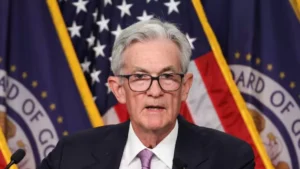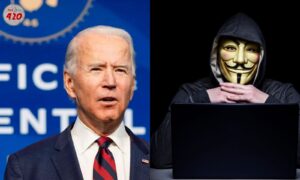
Federal Reserve interest rate hike has been signaled as a possibility in the near future, as inflation continues to weigh on the U.S. economy. This potential move is part of the central bank’s ongoing efforts to control inflation, which remains above its target rate of 2%. With persistent price increases affecting everything from groceries to energy costs, the looming rate hike is raising concerns about its impact on consumer spending and the broader market outlook.
Inflation Continues to Challenge the Economy
Inflation has been a pressing issue for over two years, driven by supply chain disruptions, labor shortages, and surging demand for goods and services. Although inflation rates have come down slightly from their peak in 2022, they remain elevated, putting pressure on households and businesses alike. Consumers are feeling the pinch as everyday expenses, including housing, food, and gas, have seen significant price increases.
The Federal Reserve’s primary tool to combat inflation is raising interest rates, which makes borrowing more expensive. The aim is to cool demand by curbing consumer and business spending. However, this comes with the risk of slowing economic growth too much, potentially leading to a recession.
Potential Impact on Consumer Spending
Higher interest rates directly affect consumers by increasing the cost of borrowing for things like mortgages, auto loans, and credit card debt. As rates rise, consumers may cut back on discretionary spending, particularly on big-ticket items like homes and cars. This, in turn, could slow down economic activity, as consumer spending accounts for a significant portion of the U.S. economy.
For homeowners, a rate hike could mean higher monthly mortgage payments, especially for those with adjustable-rate mortgages. Potential homebuyers might find themselves priced out of the market as interest rates push mortgage costs higher. This slowdown in the housing market has already begun to show, with home sales and construction activity declining over the past few months.
Market Reactions and Investor Concerns
Financial markets have been reacting cautiously to the Federal Reserve’s signals, with both stock and bond markets experiencing volatility. Investors are particularly concerned about the possibility of the Fed tightening monetary policy too much, which could stifle economic growth and corporate earnings. On the other hand, some analysts argue that the Fed’s actions are necessary to bring inflation under control, even if it means short-term market turbulence.
In recent months, Federal Reserve Chair Jerome Powell has emphasized that the central bank remains committed to fighting inflation, even at the risk of short-term economic pain. While the Fed has paused rate hikes temporarily, many analysts believe that one or more additional hikes could be on the horizon if inflation shows signs of picking up again.
Balancing Inflation Control and Economic Growth
The Federal Reserve faces the difficult task of balancing its dual mandate: controlling inflation while supporting maximum employment. Raising interest rates is a delicate process, as doing so too aggressively could push the economy into a recession. At the same time, not acting forcefully enough could allow inflation to remain a persistent problem, eroding purchasing power and hurting long-term economic growth.
With the possibility of another interest rate hike looming, both consumers and businesses are keeping a close eye on the Federal Reserve’s next moves. The outcome will likely shape the economic landscape in the months to come, influencing everything from market performance to the everyday cost of living for Americans.
Conclusion
The Federal Reserve’s potential interest rate hike is a clear response to the ongoing inflationary pressures facing the U.S. economy. While it’s aimed at bringing inflation down, the hike could also impact consumer spending and market performance. As the economy continues to face uncertainties, all eyes are on the Fed to navigate this challenging landscape.


